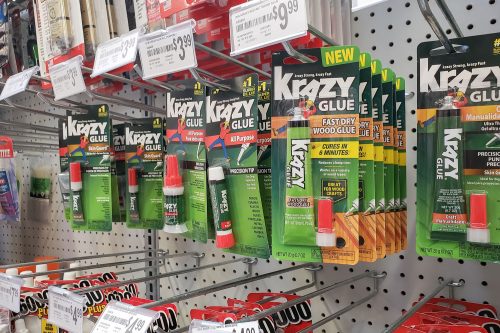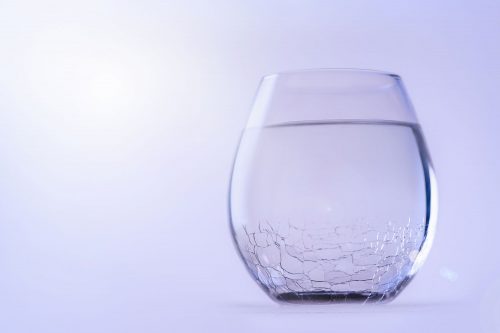Tunisian crochet mixes knitting and crochet in one lovely practice. Projects made with this style of stitching are generally very dense and have a unique look. But, if it is denser, does it use more yarn?
Yes, on average, Tunisian crochet uses more yarn than crochet. There is actually some disagreement on whether it uses more yarn than knitting. However, most people think it uses more yarn than standard crochet since it generally produces a dense weave. The different stitches can impact this.
Let us take a closer look at what that means and what you can do with Tunisian crochet.

Tunisian Crochet Vs. Traditional Crochet
Tunisian crochet, also known as Afghan stitching is, at its core, a combination of traditional crochet and knitting. The style's density makes it popular for creating Afghans, hence where the original name came from.
Tunisian crochet uses slightly different hooks, methods, and yarn. However, if you already know how to crochet or knit, you should be able to catch on quickly. The process is very similar to knitting but uses only one crochet hook.
Because the process is different, Tunisian crochet uses different stitches than traditional methods. For example, the Tunisian simple stitch is similar to the single stitch. There are also more complex stitches like purl and smock stitch.
If you are trying to learn Tunisian crochet, take it one stitch at a time. The best stitch to start with is the simple stitch. Then, once you have mastered your first stitch, work on reductions and other more advanced methods. This is the best method because it allows you to build up muscle memory and learn quickly.
The primary struggle with Tunisian crochet is edge curl. Because the stitches are being pulled, blocking is almost mandatory for this style. Thankfully, blocking is usually fairly easy and gives any style of crochet a finished look.
Does Tunisian Crochet Use More Yarn?
Yes, Tunisian crochet uses more yarn. However, it is not a clean cut. Part of the reason it is hard to determine yarn uses is because of stitch density.
Some stitches and methods are denser than others. For example, in standard crochet, single crochet is very dense and uses more yarn than double crochet. The same concept applies to Afghan stitches.
While Tunisian crochet does use slightly more yarn, it generally uses less time than both knitting and crochet. This is because your work is not turned in Afghan stitches like with standard crochet.
Can you use a regular crochet hook for Tunisian crochet?
You can, in theory, use a regular crochet hook for Tunisian crochet. However, Tunisian crochet hooks are usually easier since they offer more length.
Like knitting, Tunisian crochet puts loops on the hook. So having a long hook is needed for most projects. Some people even buy Tunisian crochet hooks that include a cable. This makes sizable projects significantly easier.
The primary difference is length, so you can use Tunisian hooks to do normal crochet. So, buying a specialized hook is not as risky or as expensive as it may seem at first. If you already crochet, it is worth it to buy a Tunisian hook, even if you do not use it for Tunisian crochet.
If you are just trying out Tunisian crochet, you can practice small swatches on your standard hooks. However, if you plan on making more than one project, it is best to buy a Tunisian hook.
What To Look For In A Tunisian Crochet Hook
There are many kinds of crochet hooks. When choosing a Tunisian crochet hook (also called an afghan crochet hook) you need one with more length than standard crochet. This allows you to gather more stitches onto the hook, which is necessary for large items.
If you are just beginning with Tunisian crochet, it is good to get a hook with a cable. This will give you more flexibility with the projects you choose.
Check out these wooden Tunisian crochet hooks with cables on Amazon.
Even if you choose to not get hooks with cables on the ends, many will have caps or other designs. This is very helpful as it keeps stitches from falling off the hook.
Check out this medium set of aluminum Tunisian crochet hooks on Amazon.
The last thing you want to look at with Afgan crochet hooks is size. The most important size to look at is their width as it will determine what kinds of projects you can do and what yarn you should work with.
Another size to look at is their length; this is particularly important if you plan to work on large projects. Hooks with cables are generally a good option if you are worried about this. However, most hooks are from 10 to 14 inches.
If you are concerned with having enough length for your projects, look for hooks on the longer side. However, many people new to Tunisian crochet find it easier to work with shorter hooks.
What can I make with Tunisian crochet?
Almost anything can be made with this style of crochet, but some projects are more popular than others. Tunisian crochet is actually a newer name for what used to be known as Afghan stitch. So, Afghans are a natural and common thing to make with Tunisian crochet.
Because Tunisian crochet projects look similar to knitting, it is popular to make clothing items. Popular clothing projects include scarves, headbands, and hats. Other non-wearable projects include dishcloths and pillows. With the popularity of Tunisian crochet on the rise, the crafting possibilities are constantly growing.
The main consideration for deciding what to make with Tunisian crochet is the density. For example, it works well for items that are supposed to be warm, like sweaters. However, unless you are going for a specific style, it is not ideal for items like tank tops.
Why does Tunisian crochet curl?
Tunisian crochet curls more often than standard crochet, especially with the top and bottom edges. This is because the stitches are pulled forward as you complete the project. However, it can also be due to general tension problems.
Most often, crochet curls because of a tension problem. With Tunisian crochet, in particular, the hook size may be to blame. To fix this, go back to your original pattern and make sure you have the right hook and yarn size. If you do not have the exact sizes you need, try to pick a hook that works well with the yarn size. When in doubt, if you have the yarn's original label it has recommended hook sizes.
Regardless of the cause, unintentional crochet curl can usually be fixed by blocking. While tension may be the cause, it is best not to go back and redo the foundation chain.
This is because Tunisian crochet curls so often and it is not worth the time to go back. Instead, aggressively blocking is one of the best solutions. With most Afghan stitch pieces, spray and blocking or wash and blocking do well.
If you struggle with blocking, you can get flattening sprays to help. Likewise, having a dedicated blocking mat and pins is a great idea if you do a lot of Tunisian crochet.
Click here to see this blocking mat kit on Amazon.
Further Reading
Hopefully, after reading this post, you feel more informed about the Tunisian stitch. If you are interested in learning more about crochet, you came to the right place! Check out these interesting articles to hone your crafting skills.
Can A Knitting Pattern Be Converted To Crochet?
17 Types Of Yarn For Crochet And Knitting [By Material, Weight, And Style]






![Read more about the article Is Glass Blowing Expensive? [Price ranges discussed]](https://craftsbliss.com/wp-content/uploads/2020/10/A-glass-blowing-artist-forms-a-blob-of-glass-into-a-vessel-using-a-gas-torch-500x333.jpg)


![Read more about the article How to Make Paper From Sawdust or Wood [8 Steps]](https://craftsbliss.com/wp-content/uploads/2020/12/Scattered-wooden-sawdust-and-blank-old-burnt-paper-sheet-for-drawings-on-dark-concrete-surface-in-carpentry-workshop-500x333.jpg)